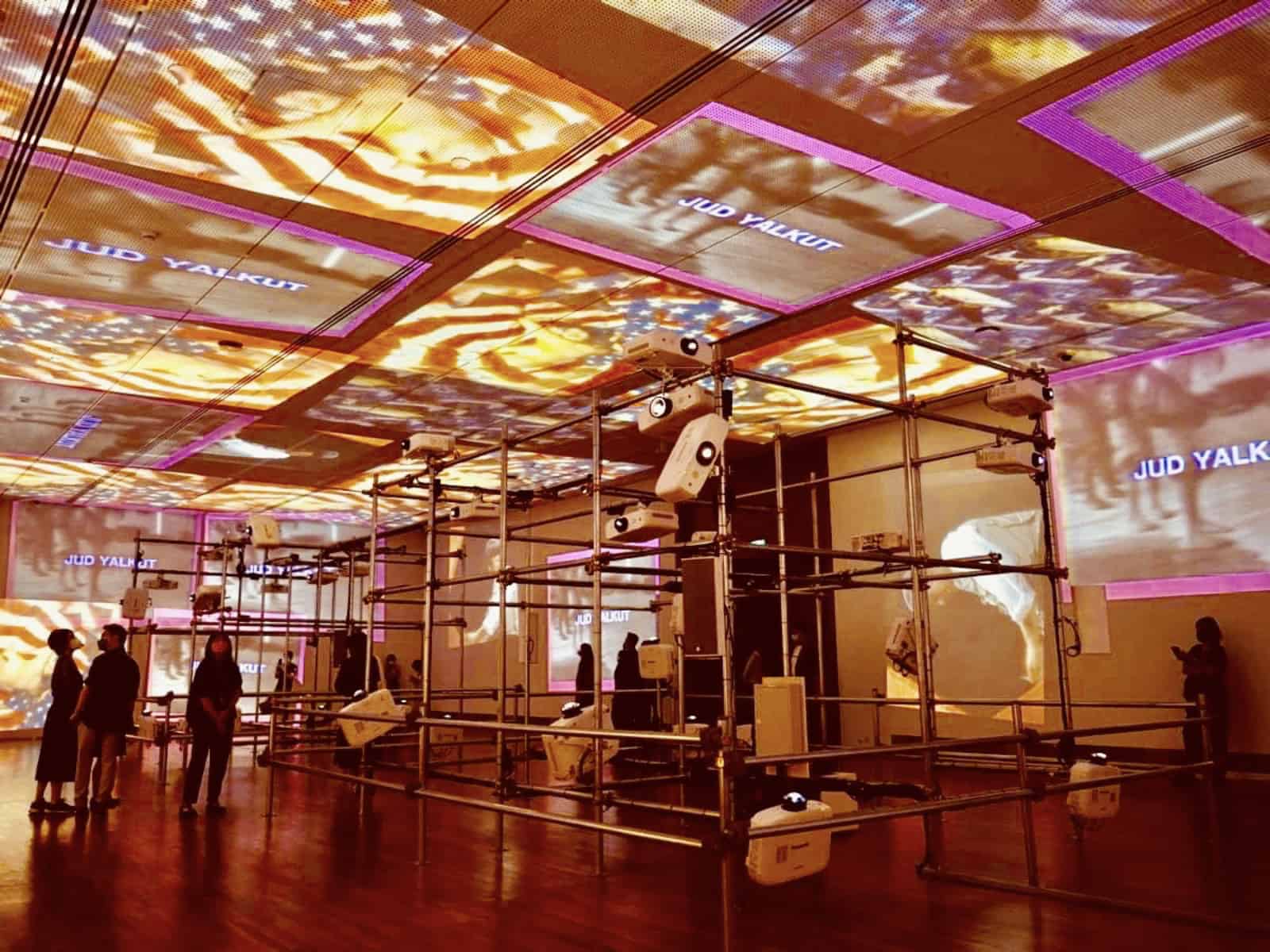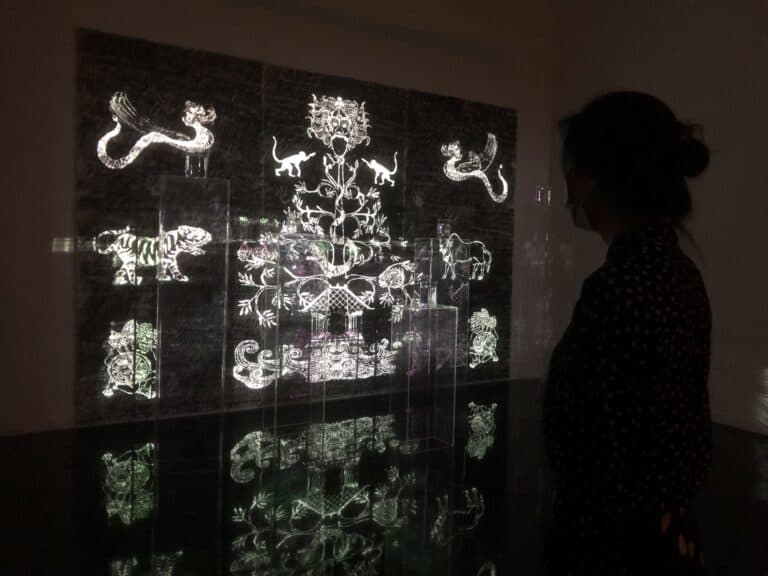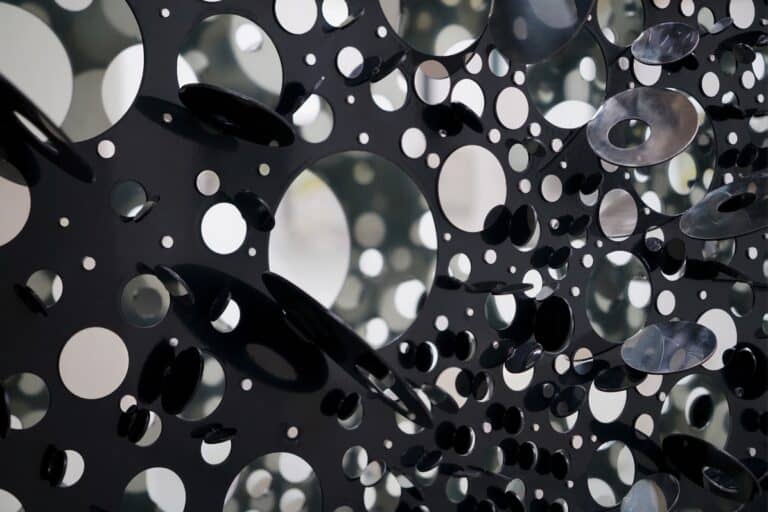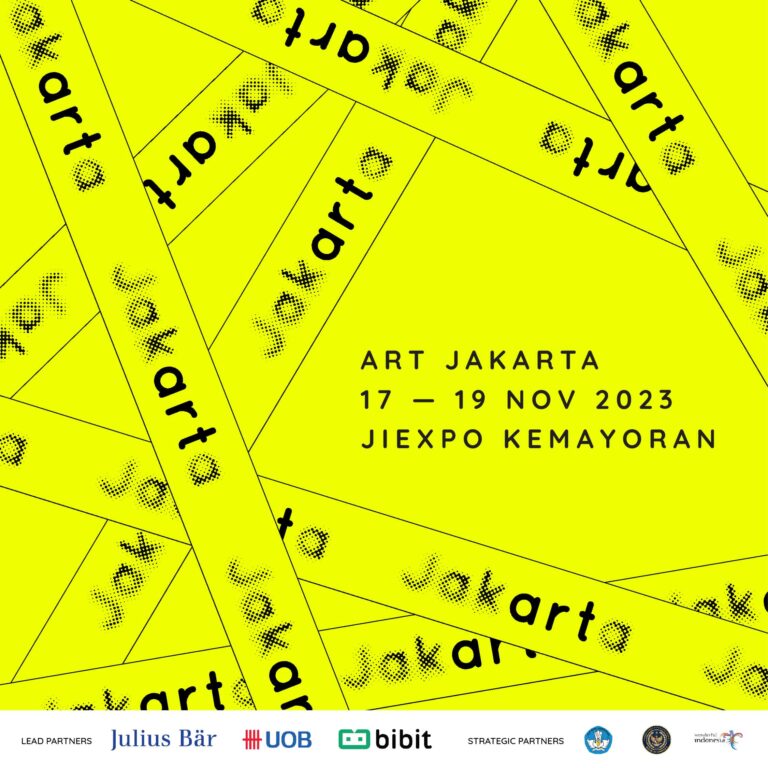What do Nam June Paik’s art and TikTok have in common? Quite a bit, it seems: chaotically-spliced everyday imagery, rapid-fire video transitions, dizzying camera movements, snazzy jingles, and an irreverent sense of humour.
It’s amazing that Paik’s vision hardly seems out of place today, considering how the artist, who was born nearly a century ago in 1932, worked not with iPhones but with Portapaks, synthesisers, and analog TVs. Decades before the World Wide Web, Paik coined the term “electronic superhighway” in 1974, predicting a global, virtual, borderless sphere where we would all be connected by high-speed technology.
Paik’s pioneering aesthetics and his uncanny foresight take centre stage at the National Gallery Singapore’s latest exhibition, Nam June Paik: The Future is Now. Previously presented at the Tate Modern in London, the San Francisco Museum of Modern Art, and the Stedelijk Museum in Amsterdam, The Future is Now makes its first and last stop in Asia here at the Gallery. It’s the biggest blockbuster exhibition to hit town since Minimalism: Space. Light. Object., which ran from 2018 to 2019. With more than 180 works, this retrospective spans 5 decades of Paik’s art, occupying the Singtel Special Exhibition Gallery and the Basement Concourse.
The exhibition follows a loosely chronological structure consisting of 11 sections. These include milestone events (such as Paik’s debut solo exhibition), technological experiments (robots, synthesisers), collaborative ventures, and points of influence (Fluxus, Asian aesthetics). Rather than a strictly linear framework, the sections mark, “sites of concentration” — as senior curator June Yap puts it — within Paik’s practice.
TV Everything
The first thing you’ll notice is Paik’s obsession with TV sets, which fill the halls in all shapes, sizes and configurations. Coming from a century where flatscreen TVs and ultra-thin tablets are the norm, Paik’s world might look a little like an antique roadshow. But these boxy TVs were once, too, futuristic gizmos signifying the advent of a new age.
Amid the social upheavals of the 1960s, Paik saw technology’s capacity to alter the fabric of everyday life, and he critically responded to this by transforming TVs, radios, synthesisers — you name it — into artistic media. “I say paper is dead, except for toilet paper,” Paik deadpanned. “The cathode ray tube will replace the canvas.”
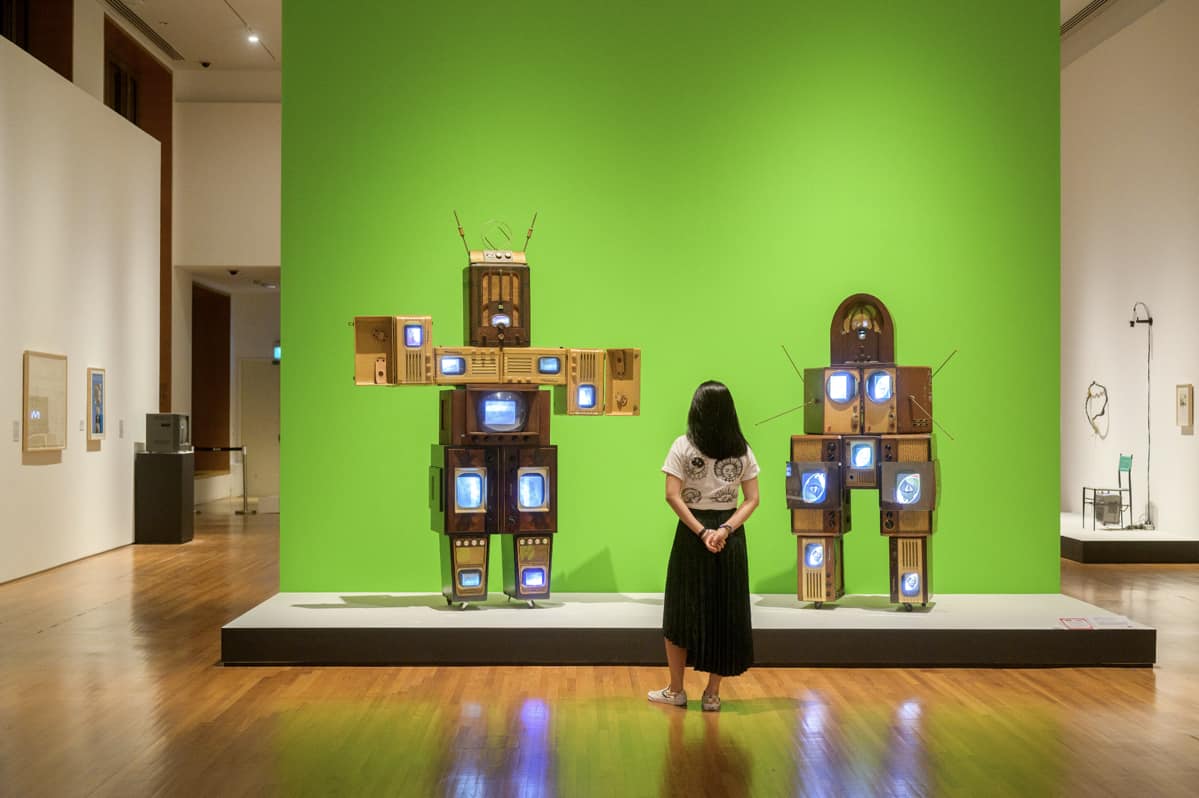
In the first gallery, radio cabinets and TV sets are assembled to form a vaguely humanoid Family of Robot, 1986. With the figures affectionately titled Grandfather and Grandmother, Paik invites us to consider how telecommunications have transformed social structures, beginning with the traditional family unit.
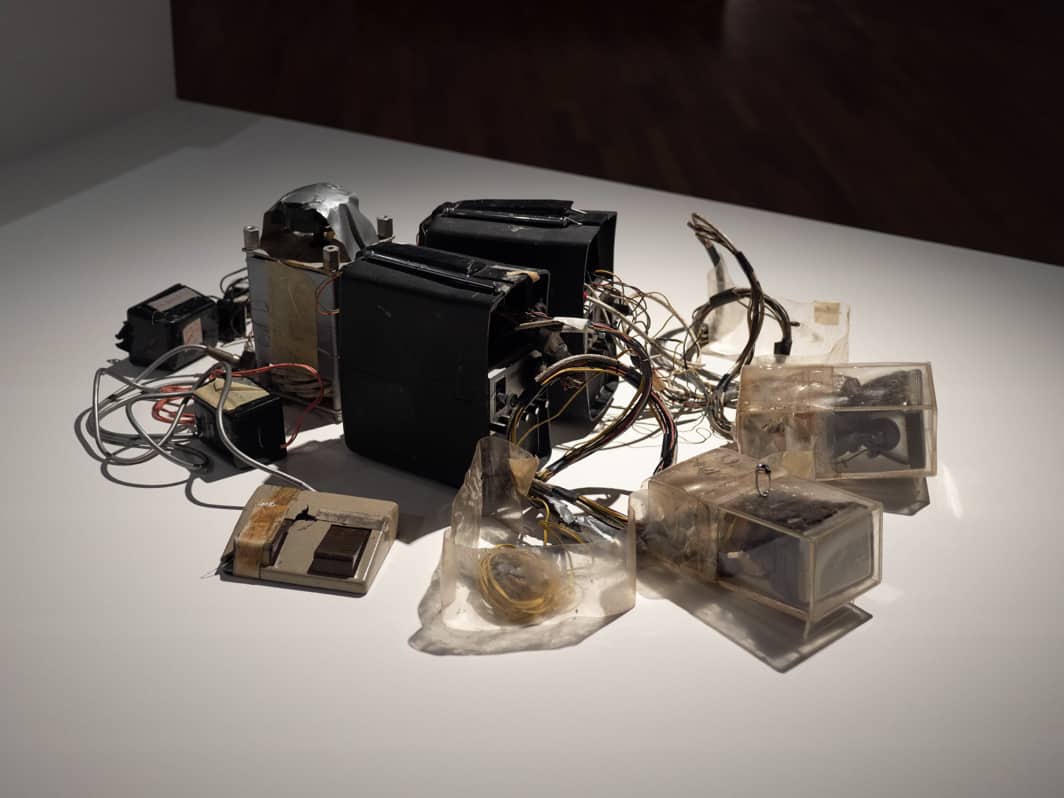
Similarly, TV Bra for Living Sculpture, 1969 humanises technology, playfully placing the body in a hybrid relationship with what Paik called “cybernated art”. This contraption consists of two three-inch cathode ray tube TVs held together by a translucent vinyl strap, and was worn by the cellist Charlotte Moorman — one of Paik’s most important collaborators — in several “topless” performances.
“To liberate people from the tyranny of TV”
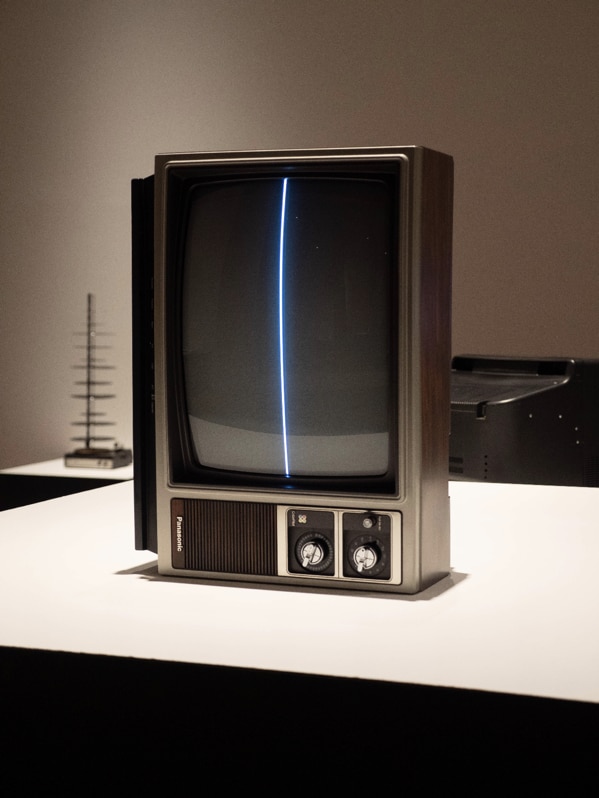
Not content with leaving the technological future solely in the hands of scientists and engineers, Paik treated television like paint or a sculptural material, manipulating signals, diodes, and frequencies, to reveal the inner workings of electronic devices. Zen for TV, 1963/1990, consists of a glitched television set with a horizontal line across its screen, which Paik flipped on its side and displayed directly in a Duchamp-esque gesture.
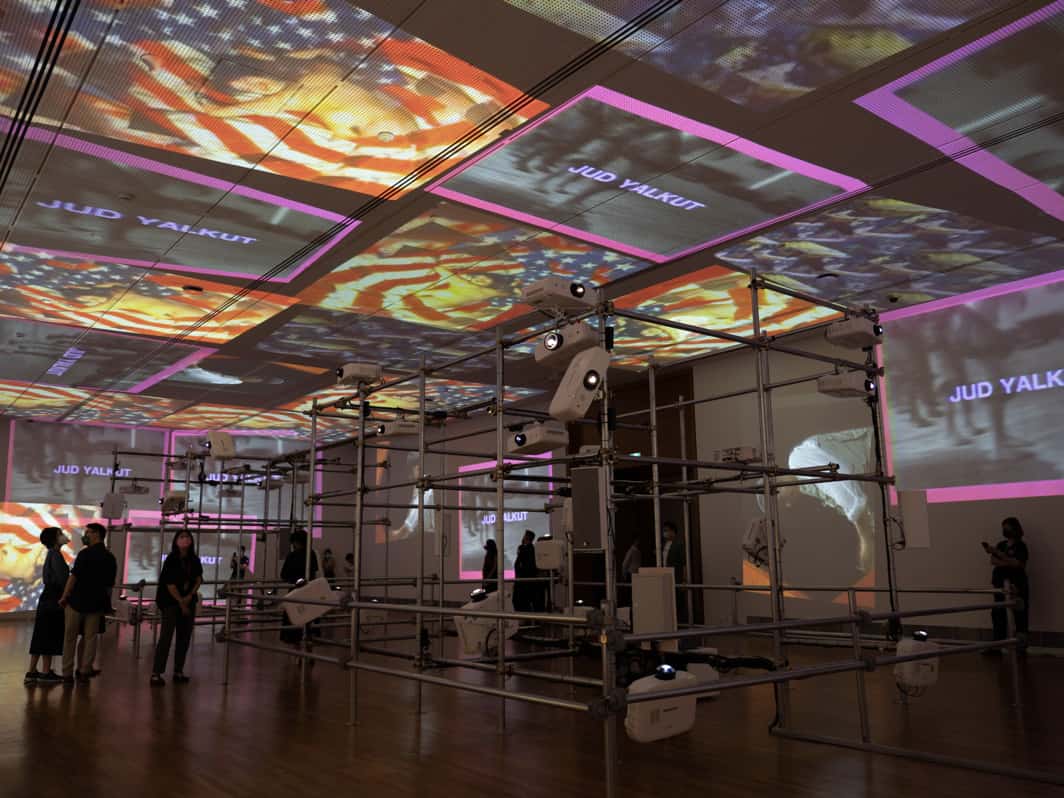
By pulling back the veil on the physical, material reality of electronic devices, Paik demystified these inscrutable machines that, for the ordinary consumer, were often no different from magical cult objects. Wires, projectors, and hardware are frequently left exposed as a part of the sculpture or installation. In Sistine Chapel, 1993/2021, a modern-day re-working of Michelangelo’s biblical frescos, dozens of projectors on a steel-bar scaffold cast flickering, gyrating images of pop stars across the walls and ceiling of the Ngee Ann Kongsi Concourse Gallery.
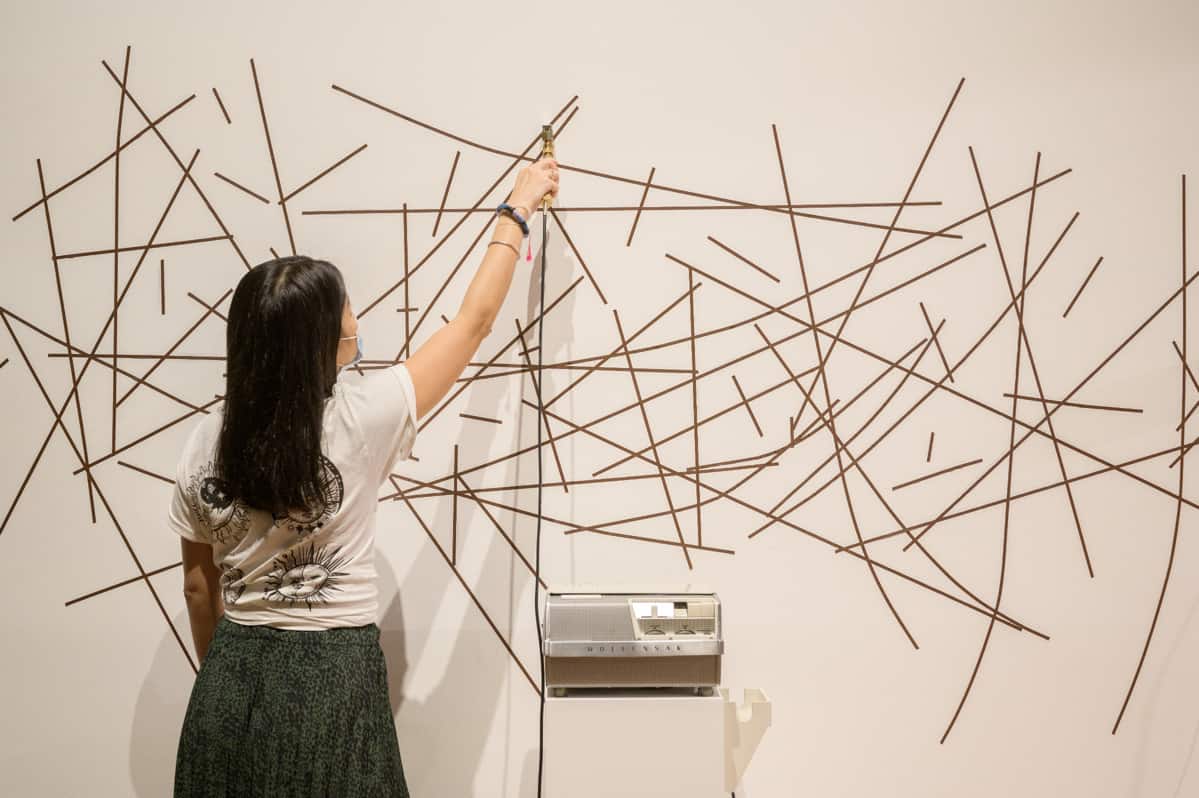
Paik firmly believed that his art should “liberate people from the tyranny of TV,” transforming them from passive receivers of information to active creators. To this end, Random Access, 1963/2000, allows audiences to create “musical” compositions by running a handheld device over a criss-crossing mass of magnetic strips on the wall. Such participatory installations are scattered across the exhibition, so be sure to check the labels or approach the gallery staff if you’re unsure if you should touch the works.
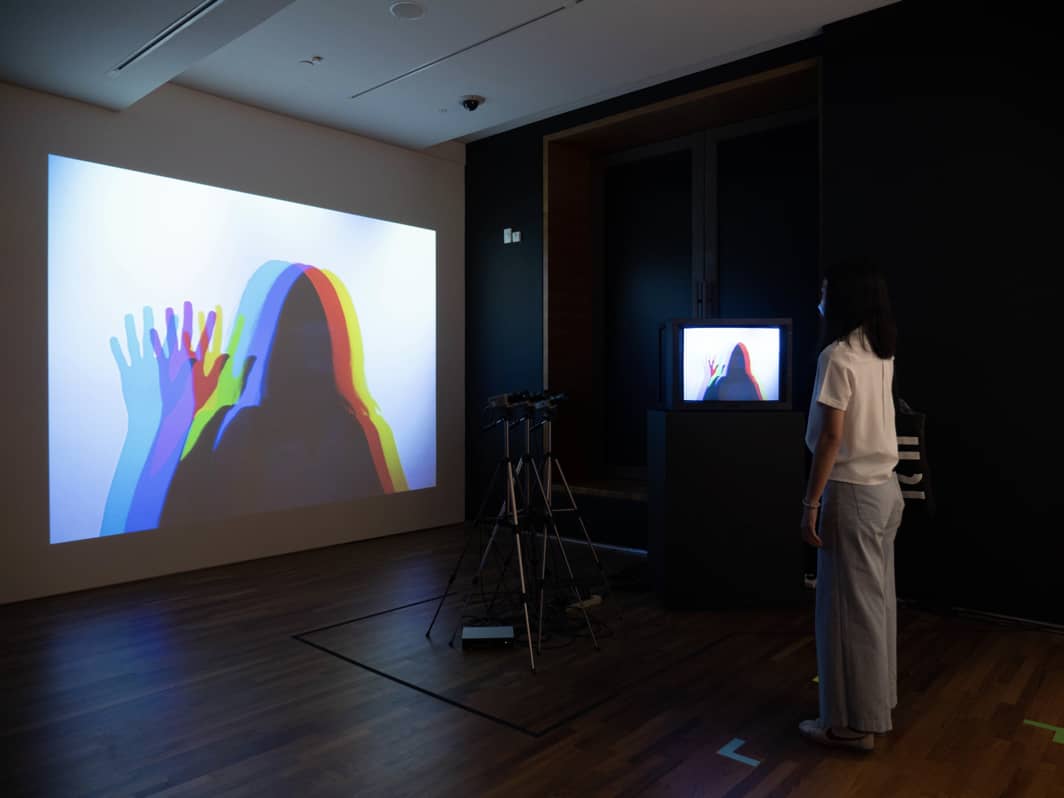
Three Camera Participation/Participation TV, 1969/2001 likewise calls for the viewer’s activating presence. The three tripod-mounted video cameras throw multicoloured, overlapping copies of the viewer’s silhouette on the empty wall and television screen. It reminds me of a 2010 installation, Your uncertain shadow (colour), by the artist Olafur Eliasson. Such contemporary echoes reveal just how far Paik’s aesthetics have shaped the visual vocabulary of new media art .
Anarchic Experiments: Dada, Fluxus, and multidisciplinary collaboration
While Paik was a visionary individual, his ideas weren’t conceived in isolation. An entire section of the second gallery charts Paik’s involvement with the avant-garde movement Fluxus, through posters and photographs of various events and “Happenings“. The information can get a little dense if you aren’t familiar with the history of European art, but it does give a good sense of the cultural milieu that Paik was working in.
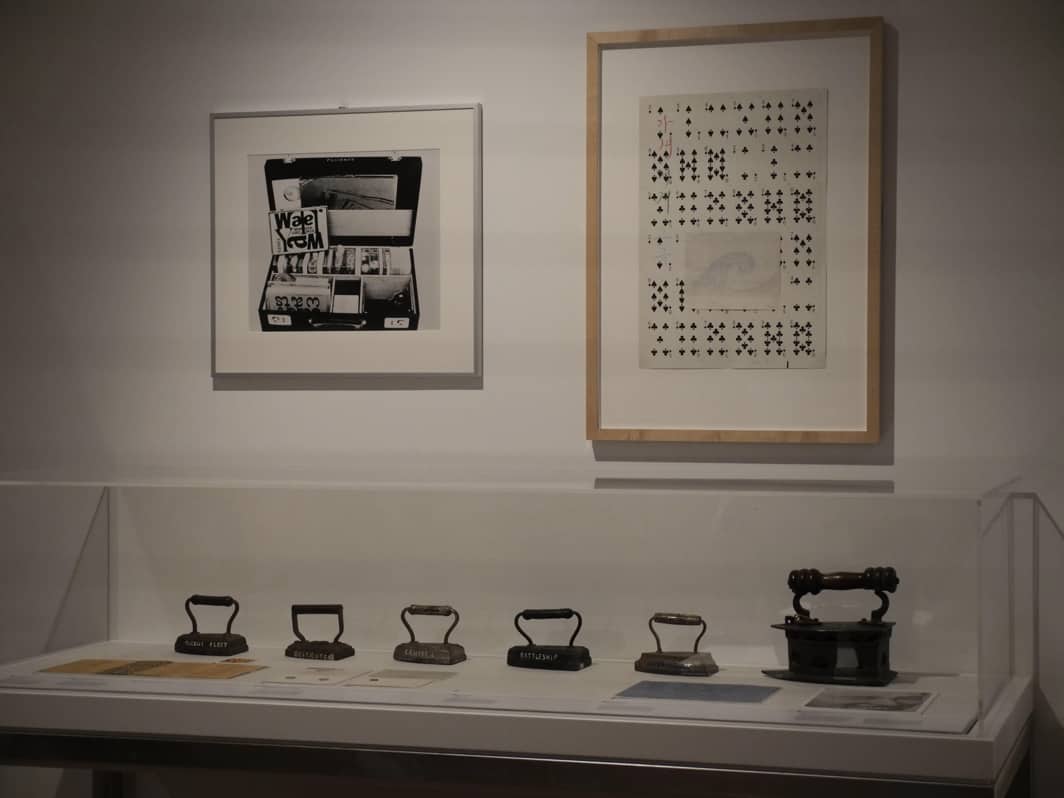
Here, a collection of old-fashioned irons emblazoned with words like “battleship” and “submarine” are arranged in a mock-military procession. Paik’s use of found objects resonates with the heritage of Dada, whose most iconic representative, Marcel Duchamp, famously declared a urinal “art”.
In the playful, anarchic spirit of his forerunners, who brazenly claimed everyday objects and actions as art, Paik riled his audiences with provocative performances. These included tossing beans towards his audience, dousing his hair in shaving cream, and banging his head on the piano while performing a classical piece. If you have the time, the well-researched captions in the exhibition are worth close read — they often include nuggets of Paik’s tongue-in-cheek humour and wild anecdotes that are quite at odds with the museum’s prim-and-proper atmosphere.

The exhibition also spotlights Paik’s cross-disciplinary collaborations with seminal figures such as the composer John Cage, performance artist Joseph Beuys, dancer and choreographer Merce Cunningham, and cellist Charlotte Moorman. John Cage Robot II is a tribute to the composer, whose engagement with time, silence and Zen Buddhism profoundly influenced Paik’s practice. In fact, he wrote, “1957 was 1 BC (Before Cage),” likening the years before he met Cage in 1958 to the time before the birth of Christ.
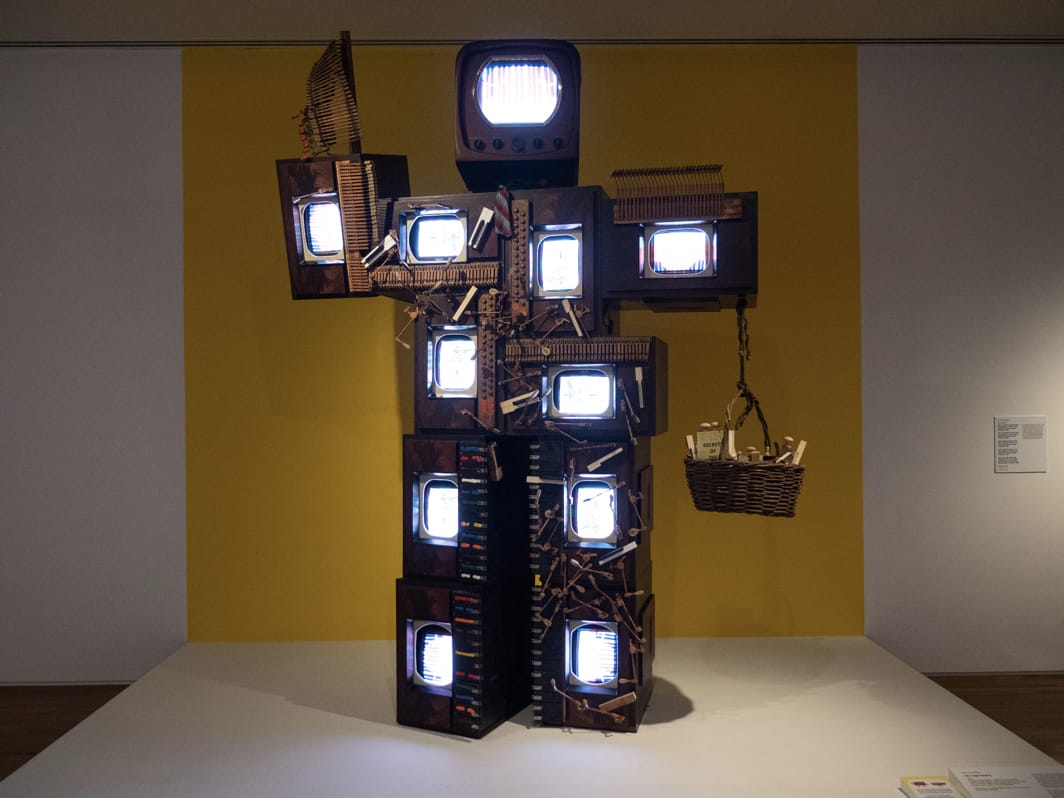
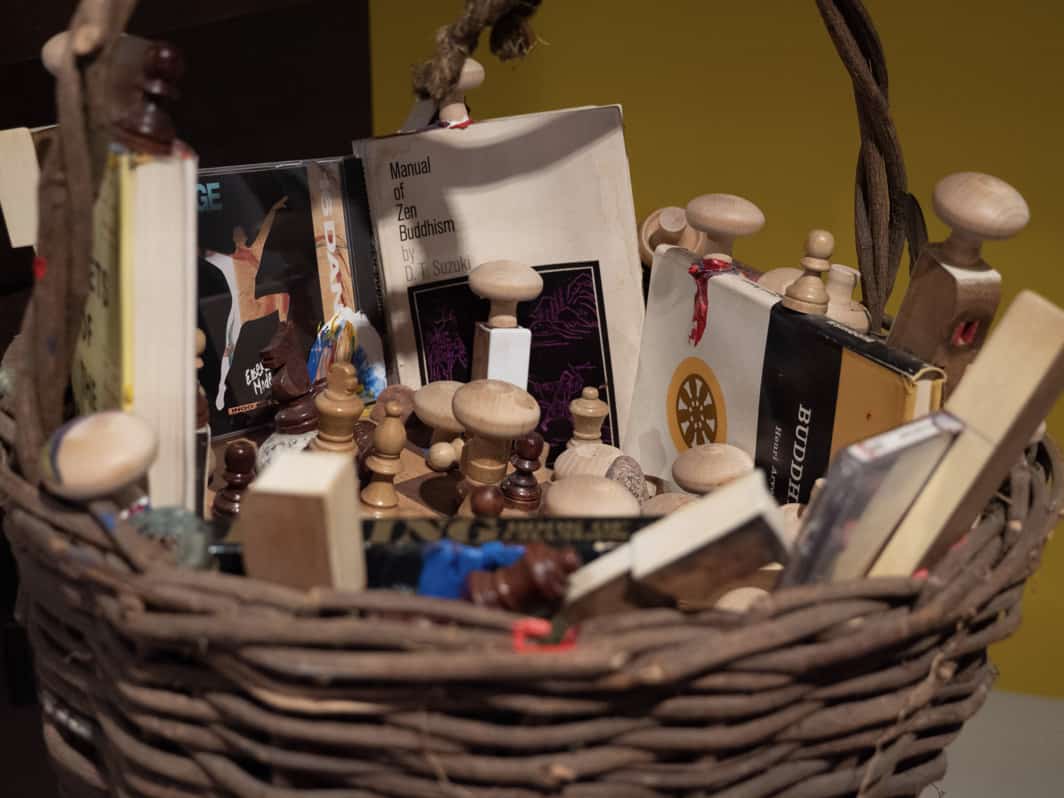
Beyond Borders
With a good mix of art and art-related paraphernalia, the exhibition is curated to ease audiences into the intricacies of Paik’s narrative. One of the first few exhibits is a large vitrine containing objects gathered from Paik’s studios across the decades. This motley assortment — which includes the artist’s passport, a bronze Shiva Nataraja, colourful plastic robots, crumpled paint tubes, and a mini toy piano which apparently doubled as Paik’s palette — offers us a glimpse into his eclectic interests and background.
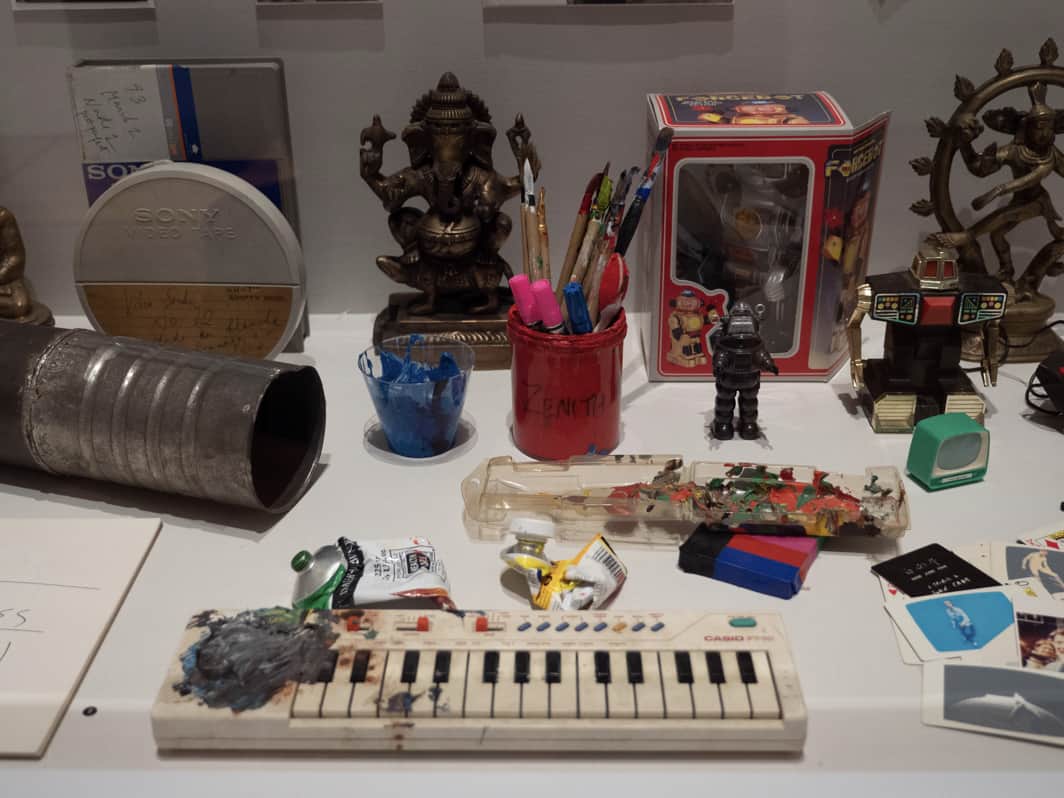
Born in Korea, Paik was something of a cultural nomad. He lived and worked in Japan, Germany, and the U.S., delving into various fields: classical music, visual art, science and technology, mass-media broadcasting, and Asian philosophy. Borders and boundaries dissolve in his work, which bridges the gap not only between art, audiences and everyday life, but also between Eastern and Western cultures.
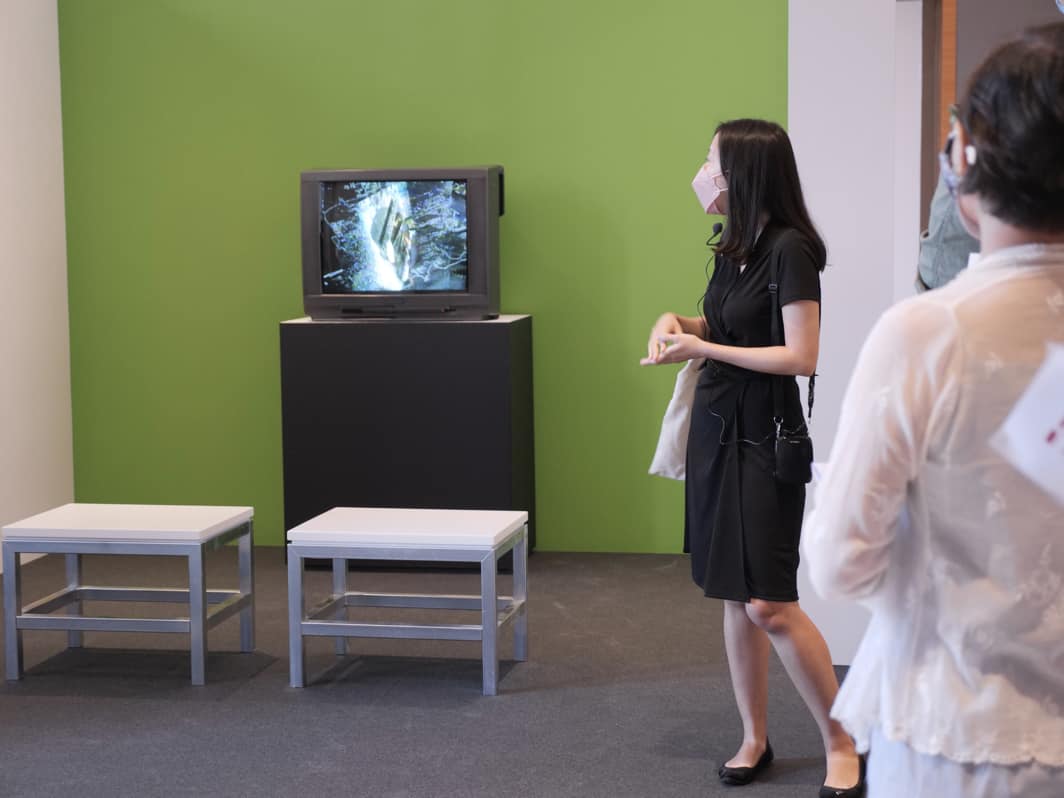
Screened on the same monitor as Good Morning, Mr. Orwell, 1984, Paik’s television broadcast video Bye Bye Kipling, 1986 exemplifies the borderless-ness of his practice. This eclectic, feverish mish-mash of a marathon in Seoul, Lou Reed’s rock music and kabuki theatre stands as a bold rebuttal to Rudyard Kipling’s famous dictum, “East is East, and West is West, and never the twain shall meet.”
While he envisioned a globalised, multicultural world light years into the future, Paik also looked back on age-old ideas and cultural traditions in addressing society’s relationship with technology. Paik’s connection to Asia gains special resonance in this exhibition, given the National Gallery’s commitment to, in the words of director Eugene Tan, “expand and reflect on how we think about art from a Southeast Asian perspective.” This comes through most strongly in the last of the 11 sections, “Paik on Asia,” which includes my favourite work so far, The Moon is the Oldest TV, 1965-1992.
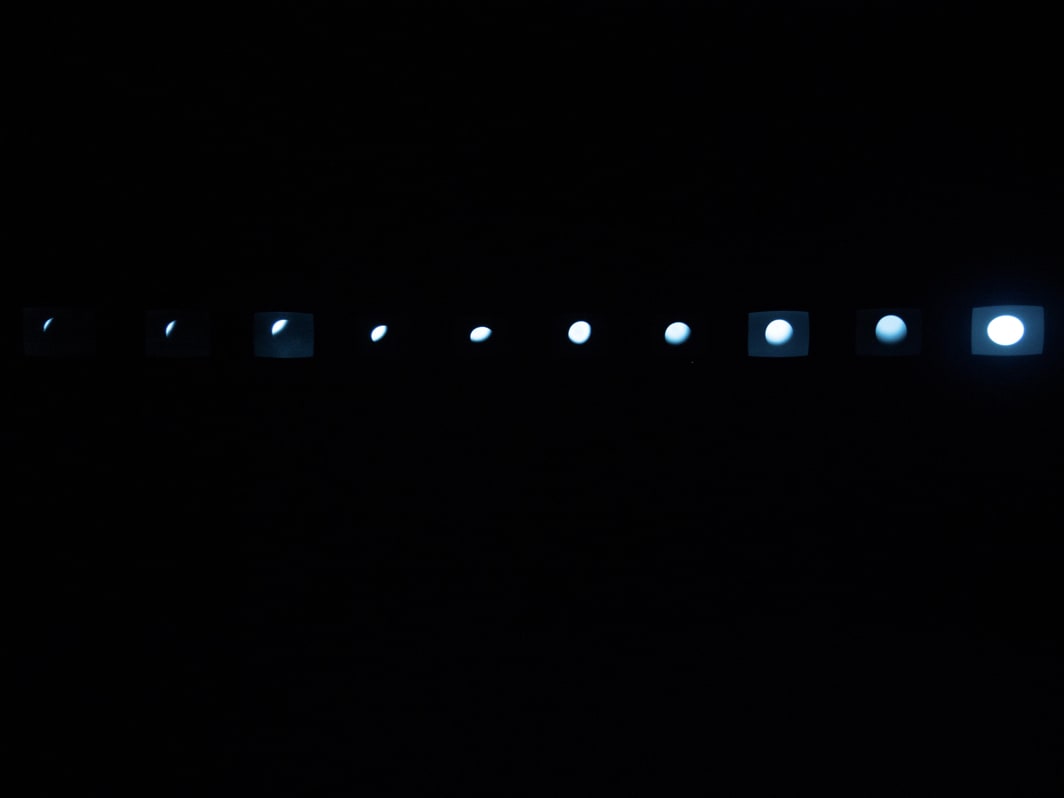
Shrouded in complete darkness are 12 black-and-white TVs. Elevated just above eye-level on invisible pedestals, they display glowing fragments of a sphere. Photographs do no justice to the breathtaking experience of standing before these still, silent, altar-like monuments. Paik’s installation is unearthly, both in a spiritual and sci-fi-esque sense. The moon is a classic symbol of enlightenment in Zen Buddhism, and with Neil Armstrong’s moon landing in 1969, it would’ve been a focus of the hype around space exploration and satellite technology.
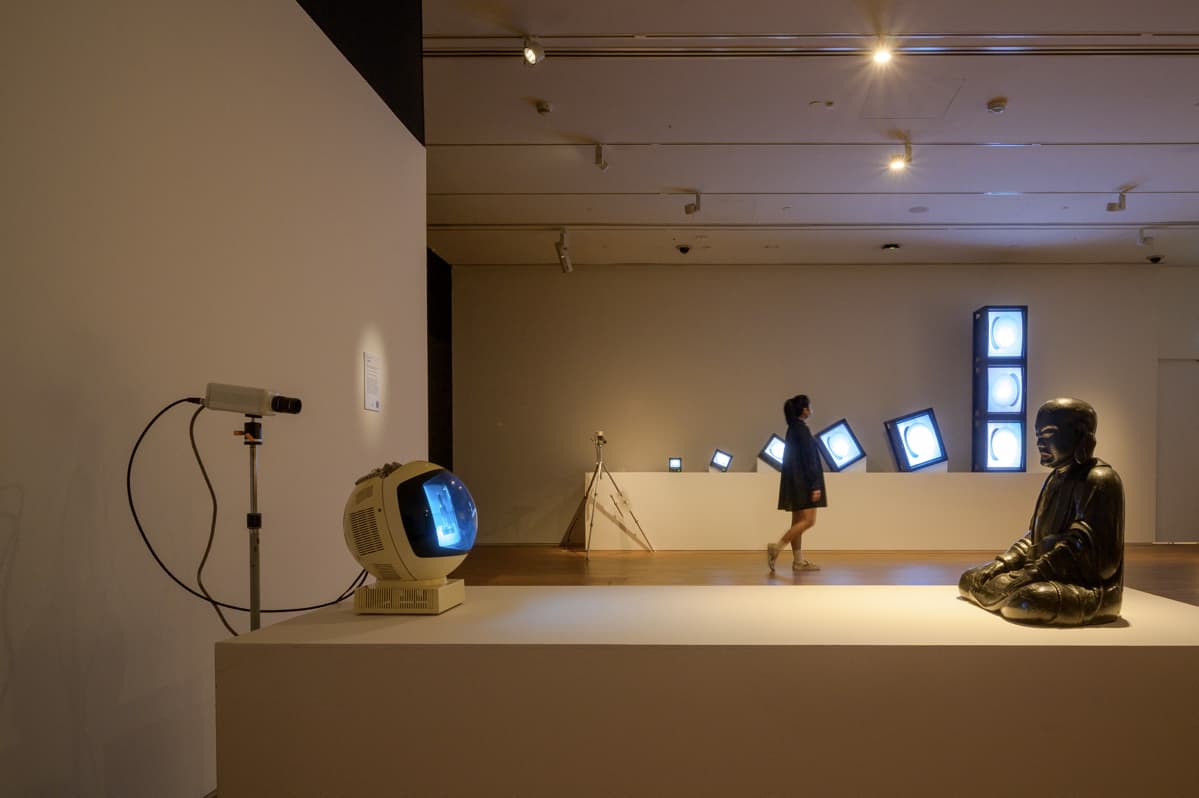
And of course, no major retrospective of Paik’s would be complete without his iconic TV Buddha, 1974. In this installation the Buddha sits meditating on his own image, which a CCTV camera captures and feeds into a round TV monitor. Here, Paik sets up an infinitely recursive temporal loop that recalls Buddhist ideas of rebirth and reincarnation.
Technology and spirituality, East and West, the sacred and the profane, art, mass media, and the everyday — all these collide in Paik’s extraordinary oeuvre, which spans decades, disciplines and cultures. It’s hard to overstate the lasting legacy of Paik’s vision, both in art history and in popular culture.
If you’re planning on viewing the exhibition in-depth, I would suggest setting aside some time for Paik’s video works, which are mostly found at the end of the second gallery and in the foyer leading to the third. Paik’s video art is difficult to capture on camera—and so probably less gram-worthy than some of the Gallery’s previous hits, like Yayoi Kusama’s infinity rooms or Olafur Eliasson’s Room for one colour. But this is precisely why the exhibition demands an in-person visit. There is no substitute for being engulfed by luridly-coloured images in Sistine Chapel or plunging into the darkness of The Moon is the Oldest TV.
For anyone who’s interested in technology, music, and/or contemporary art, this exhibition is a must-see. And if you’re not sure about new media, but want to know where the hypersaturated, fast-paced aesthetics of billboards, Youtube ads and Tiktok reels come from, The Future is Now is a fantastic place to start.
________________________________
Note: Nam June Paik: The Future is Now is on view from 10 December 2021 to 27 March 2022. Book your tickets at https://www.nationalgallery.sg/namjunepaik.
All images by the author, unless otherwise stated.
